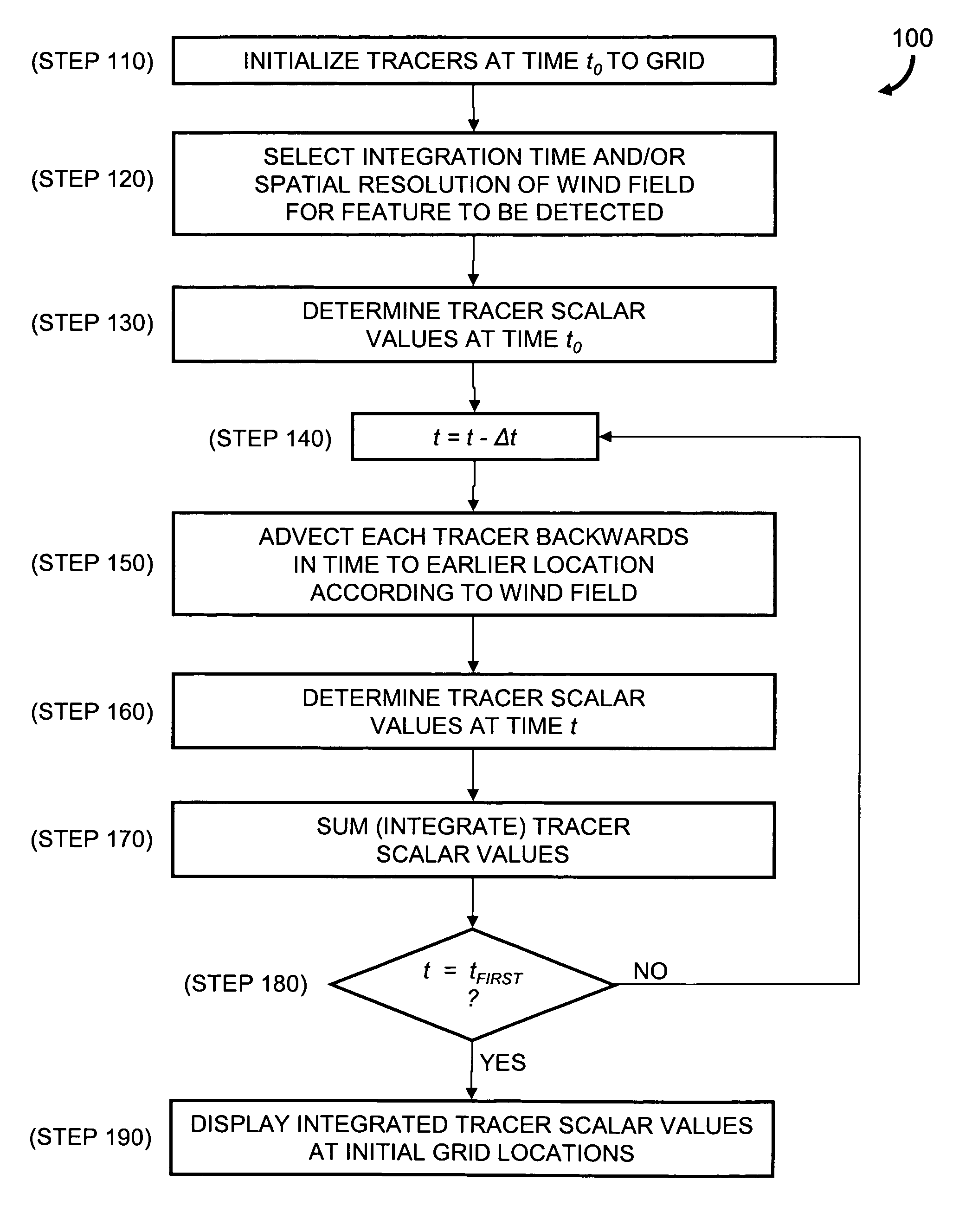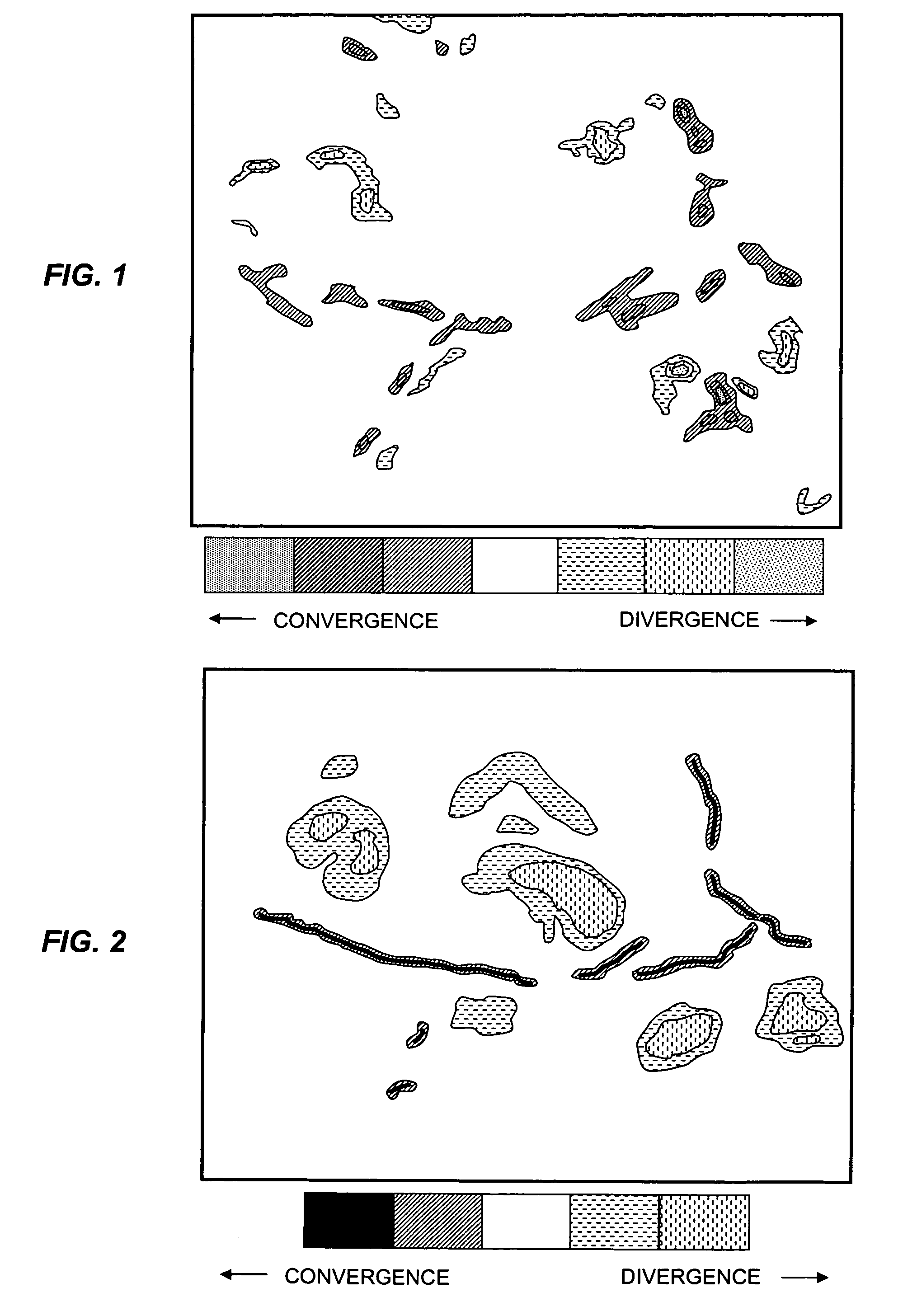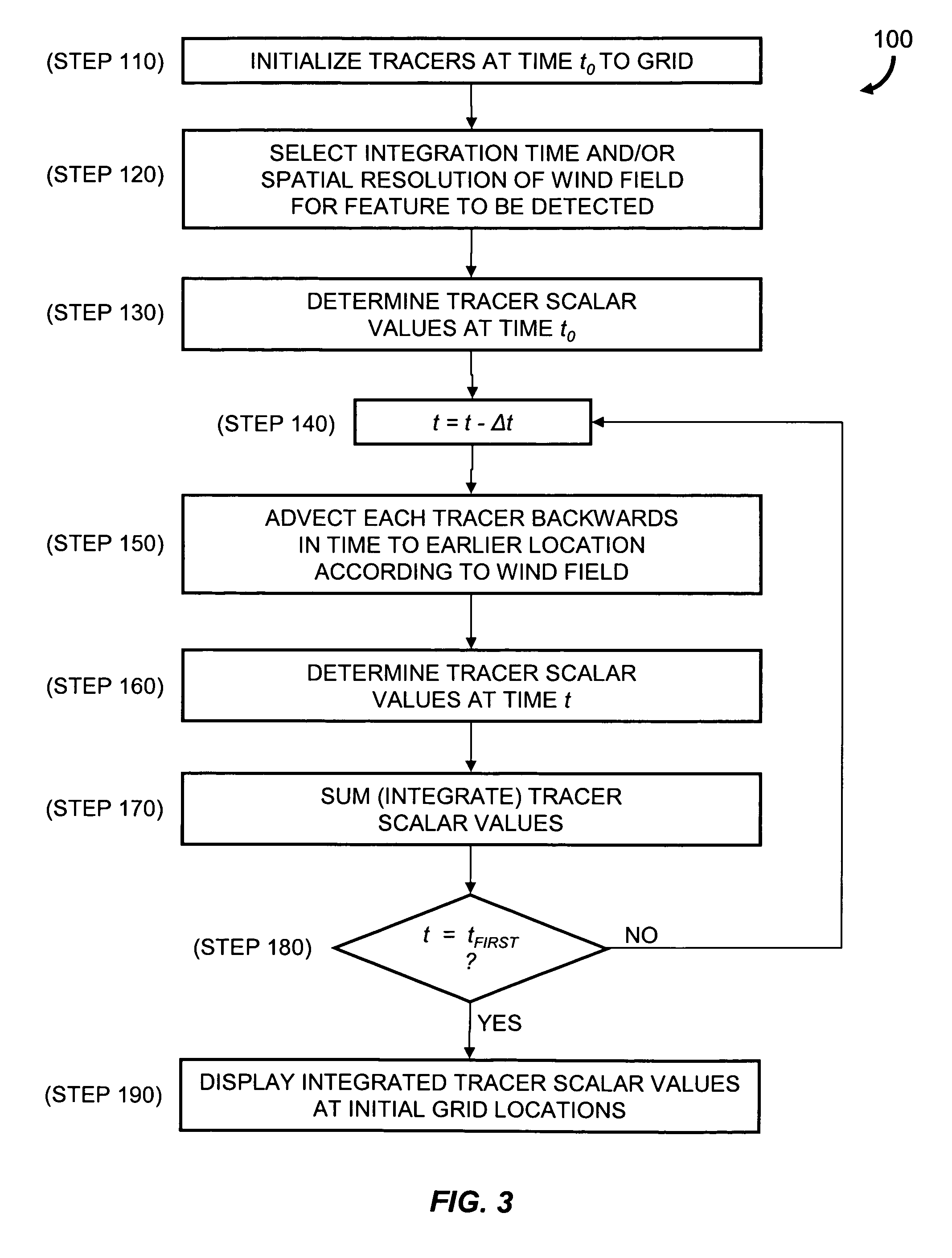Atmospheric feature detection using Langrangian scalar integration
a technology of langrangian scalar integration and atmospheric features, applied in the field of weather analysis, can solve the problems of limited ability to adequately resolve or identify important atmospheric features, insufficient spatial resolution, and limited application of atmospheric dispersion models
- Summary
- Abstract
- Description
- Claims
- Application Information
AI Technical Summary
Benefits of technology
Problems solved by technology
Method used
Image
Examples
Embodiment Construction
[0018]In brief overview, the invention relates to a method and a system for detecting an atmospheric feature. The method utilizes a Lagrangian scalar integration (LSI) technique as a temporal filter that sums meteorological information acquired for multiple times. Features that are coherent in time are amplified while features that are not coherent (i.e., temporally sporadic) over the integration time are de-emphasized. The inclusion of temporal information allows for an effectively denser spatial sampling of the original coarse resolution analysis. In essence, the method compensates for low spatial resolution by including dynamically consistent information from multiple temporal samples.
[0019]The method of the invention can be applied to fields present in a two-dimensional or three-dimensional fluid flow where a conserved scalar is transported by the fluid flow. Although described below primarily with respect to atmospheric phenomena, the invention also contemplates utilization of ...
PUM
 Login to View More
Login to View More Abstract
Description
Claims
Application Information
 Login to View More
Login to View More - R&D
- Intellectual Property
- Life Sciences
- Materials
- Tech Scout
- Unparalleled Data Quality
- Higher Quality Content
- 60% Fewer Hallucinations
Browse by: Latest US Patents, China's latest patents, Technical Efficacy Thesaurus, Application Domain, Technology Topic, Popular Technical Reports.
© 2025 PatSnap. All rights reserved.Legal|Privacy policy|Modern Slavery Act Transparency Statement|Sitemap|About US| Contact US: help@patsnap.com



